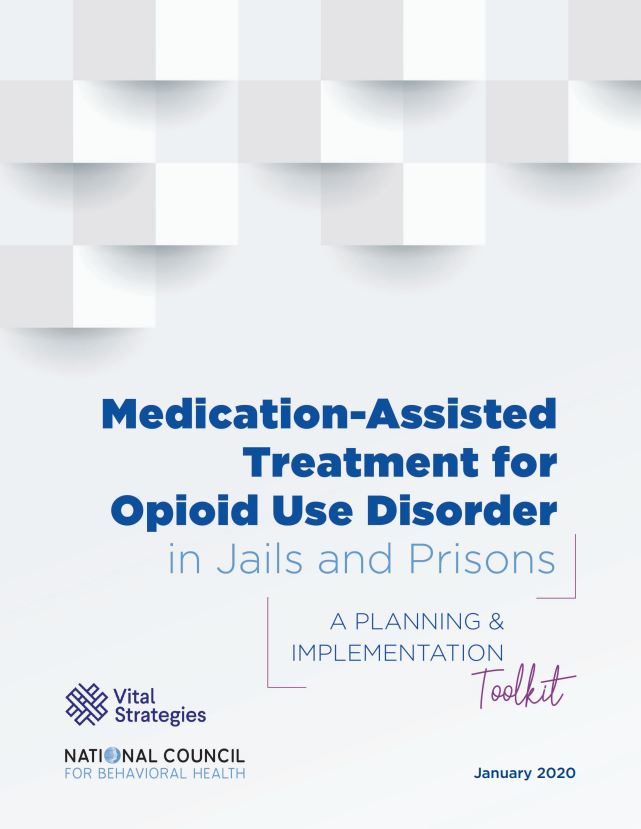Headline
This implementation toolkit describes how health care providers and their correctional agency partners can design medications for addiction treatment (MAT) programs for people with opioid use disorder (OUD) in jails and prisons.
Context
Justice-involved individuals are disproportionately at risk of having OUD and dying of overdose, yet few correctional facilities in the United States are equipped to provide evidence-based treatment for OUD, such as MAT. This resource is designed to support health care providers and correctional administrators in understanding why MAT is important to provide in jails and prisons, information about the three U.S. Food and Drug Administration-approved medications to treat OUD (methadone, buprenorphine, extended-release injectable naltrexone), and detailed guidance on how to plan and implement MAT programs in correctional settings.
About this Tool
This implementation toolkit was designed to help in the establishment of MAT programs in jails and prisons. It includes:
- Considerations for the pre-planning stage, such as identifying an internal champion and cultivating leadership buy-in;
- Guidelines for the planning and design stage, including determining which program model and medication is most appropriate for the facility and determining eligibility criteria;
- Descriptions of varying workforce needs;
- Tools for understanding medication protocols, including screening, ongoing care, and release;
- Steps that should be taken for individuals with OUD upon their release, including connections to community-based treatment;
- A discussion of data monitoring and evaluation, including choosing metrics; and
- Strategies to support funding and sustainability.
Takeaways
Given the significant risk for OUD and OUD-related overdose deaths among the justice-involved population, health care providers and their correctional agency partners can apply this toolkit to establish and refine MAT programs within their jails and prisons.

